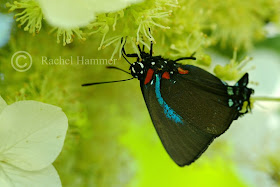As much as is reasonably possible, you should always try to carry your camera with you.
This is because opportunities have a nasty tendency of popping up when you least expect them. A walk around your apartment complex suddenly becomes a photo session; you spy an unusual bird in the walmart parking lot (this has happened to me); your friend brings her adorable puppy to a party, etc. All of these situations make for great photography, but not if you don't have your camera.
 |
| Late instar grasshopper |
This is the guiding principle of street photography, but we hardly think of it for nature photography. It's as if "nature" has retreated to its own little place in the world, and we can't encounter it unless we go specifically looking. Well, I contend that this is a false notion. Due to encroachment and habitat loss, urban wildlife are becoming more adaptable and more common.
 |
| Grasshopper nymph |
Of course, as you shouldn't be surprised to hear at this point, insects are the queens of urban animal life. Small and highly adaptable, insect species flourish where other animals are unable to survive. This means that there is likely a whole safari of creatures waiting outside your front door.
...Have you gone to look yet?
 |
| Grasshopper nymph |
I wanted to highlight these little grasshopper nymph pictures because I took them in a flower pot outside my apartment door. To clarify, it's not a garden; it's a single flower pot. And it's not even my flower pot. Having my camera on hand whenever I go outside allows me to capture unexpected critters like these. And hey, they look pretty cool, right?
So how about you? Are you glued to your camera, or do you tend to leave it at home?
Insects not your thing? Check out my article on bird photography.
Want to see more tips? Check back every Friday for a new post. Click here to follow me on Tumblr and here to follow me on Bloglovin! Don't forget you can also use the handy sidebar to subscribe via email or RSS feed.
















